Marilyn Hamilton's Blog, page 6
September 18, 2024
Listening to Local Place Plan Voices 3/5
This is a series of Infographics that share the journey of the 4 Voices of the Park Ecovillage Findhorn, Scotland. The stories follow them as they explore integral perspectives while they collaborate on preparing a Local Place Plan to deliver to Moray municipality. The articles were originally published in the Rainbow Bridge – the Park Ecovillage Findhorn Community Magazine between June and September 2024.
This third one focuses on Housing 2.
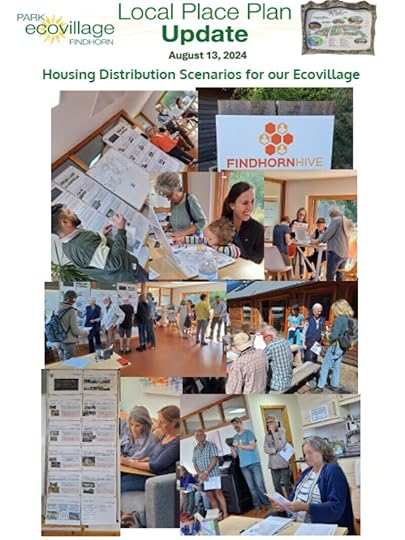
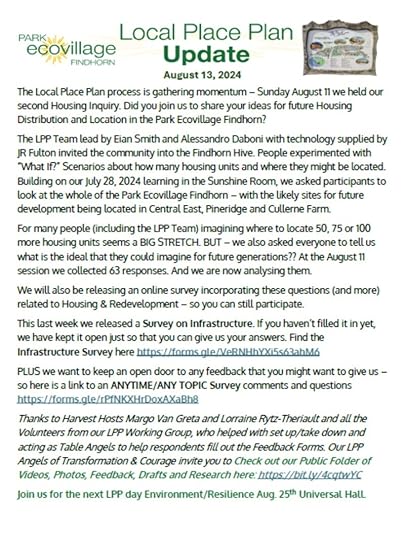
Listening to Local Place Plan Voices – Housing1 – 2/5
This is a series of Infographics that share the journey of the 4 Voices of the Park Ecovillage Findhorn, Scotland. The stories follow them as they explore integral perspectives while they collaborate on preparing a Local Place Plan to deliver to Moray municipality. The articles were originally published in the Rainbow Bridge – the Park Ecovillage Findhorn Community Magazine between June and September 2024.
This second one focuses on Housing Part 1.
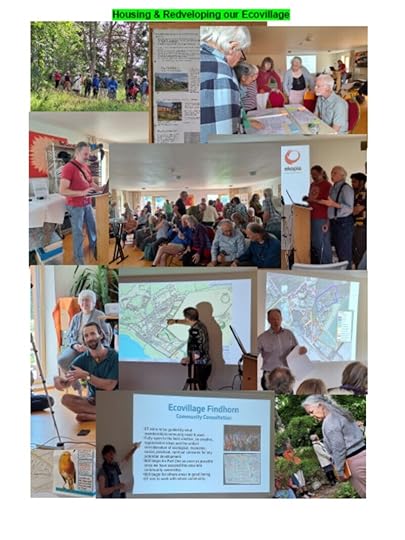

Listening to Local Place Plan Voices 2/5
This is a series of Infographics that share the journey of the 4 Voices of the Park Ecovillage Findhorn, Scotland. The stories follow them as they explore integral perspectives while they collaborate on preparing a Local Place Plan to deliver to Moray municipality. The articles were originally published in the Rainbow Bridge – the Park Ecovillage Findhorn Community Magazine between June and September 2024.
This second one focuses on Housing Part 1.


Listening to Local Place Plan Voices – Infrastructure – 1/5
This is a series of Infographics that share the journey of the 4 Voices of the Park Ecovillage Findhorn, Scotland. The stories follow them as they explore integral perspectives while they collaborate on preparing a Local Place Plan to deliver to Moray municipality. The articles were originally published in the Rainbow Bridge – the Park Ecovillage Findhorn Community Magazine between June and September 2024.
This first one focuses on Infrastructure.
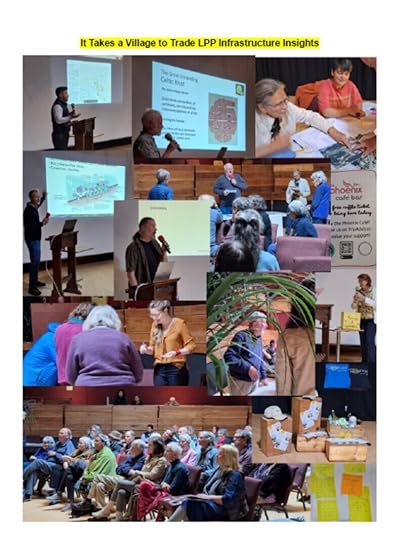
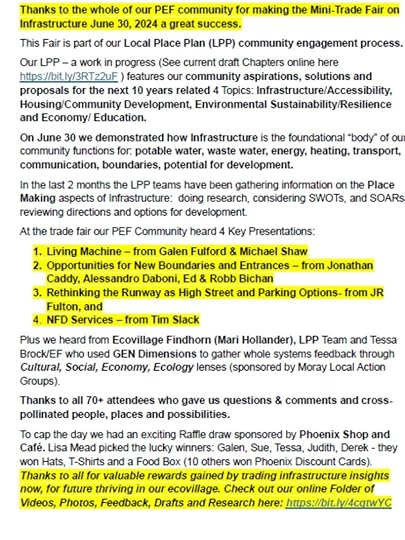
Listening to Local Place Plan Voices 1/5
This is a series of Infographics that share the journey of the 4 Voices of the Park Ecovillage Findhorn, Scotland. The stories follow them as they explore integral perspectives while they collaborate on preparing a Local Place Plan to deliver to Moray municipality. The articles were originally published in the Rainbow Bridge – the Park Ecovillage Findhorn Community Magazine between June and September 2024.
This first one focuses on Infrastructure.


June 19, 2024
Reflective Organ Newsletter June Solstice 2024: Ecovillage, City, 4th Voice

This newsletter is published quarterly using a cycle of perspectives on the Integral City viewed from: Planet, People, Place and Power. The theme of this issue is People.
The unusual and captivating hero of this book is the city. Not an inert mass of buildings, but a collective, a hive, a holarchy that brings people and processes of inquiry together in action. This human centered approach to systems of a city offers well chosen “sticky” concepts, grounded in practice and expressed with a simplicity that belies their complexity. What’s more, the book offers tons of great questions and grounded frameworks that help us articulate Gaia’s reflective capacity. It’s a resource for action researchers in the field of urban planning and perhaps for all whole systems/integration oriented professionals.
— Hilary Bradbury, PhD, Professor (OHSU), Editor Handbook of Action Research & Action Research Journal, Convener, AR+.
Praise for Hamilton, M. 2017, Integral City Inquiry & Action Designing Impact for the Human Hive, Minneapolis, MN: Amaranth Press,LLC
Scroll to end of newsletter to access Free Resources.
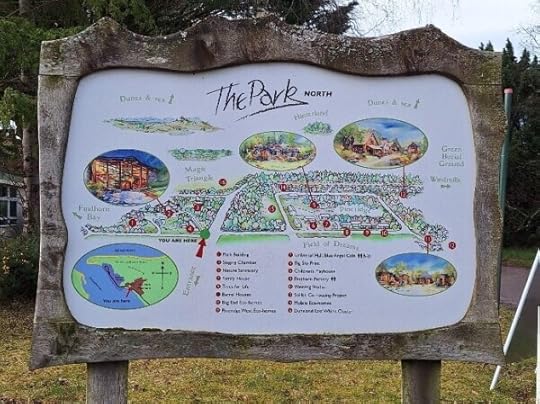 Is it Easier to Live in a City than an Ecovillage? Appreciating the Fields of Ecovillages, Urban Ecosystems, 4th VoicesLocal Purposing
Is it Easier to Live in a City than an Ecovillage? Appreciating the Fields of Ecovillages, Urban Ecosystems, 4th VoicesLocal PurposingThese last few months I have been dedicating much of my energies to catalysing a Vision and Purpose Quest in the Ecovillage Findhorn in northern Scotland, where I live.
In the process of designing a Vision Quest and then following the paths that people are attracted to travel, we have re-affirmed many of the processes Integral City has identified in earlier times in other locations, working in towns and cities. It appears that key fundamental questions still reveal realities that are the energizers for incubating change in our human ecosystems (no matter what size):
What works around here?What doesn’t work around here?If you were mayor for a day, what is the first thing you would change?These are questions I started using in much larger urban settlements than ecovillages and that I thought would still make sense to use here (see Book 2). And so the engagement with these questions does indeed raise individual interest, energizes groups and even releases resources – especially when they are interwoven with the spiritual practice of Attuning to the Silence – the greater Field of life that flows through all of us.
It is intriguing and inspiring for me that these core questions still have power. Their simplicity means that most everyone can answer them. They are a potent place to start an inquiry and generate a Field of engagement where the 4 Voices (citizens, civic manager, business/innovators, civil society) of the ecovillage can notice the patterns that connect them.
But now that I am moving forward with focalising this inquiry in the ecovillage where I live, I notice a peculiar experience – that it seems more difficult to live (comfortably) in the ecovillage than it does in a larger town or city?
…
Looking at patterns of human interaction, from Purpose to Placing to Presencing we discover a fractal, holographic pattern of human interaction – that connecting the system to more of itself, enables our ecovillages to become coherent, our neighbourhoods to become rewarding containers of connection and our 4th Persons/Voices to be heard in the power of their (shared) silence.
Click here to read the whole editorial.Integral City Deep Reads for These Times.fusion-content-boxes-1 .heading .content-box-heading {color:#212934;} .fusion-content-boxes-1 .fusion-content-box-hover .link-area-link-icon-hover .heading .content-box-heading, .fusion-content-boxes-1 .fusion-content-box-hover .link-area-link-icon-hover .heading .heading-link .content-box-heading, .fusion-content-boxes-1 .fusion-content-box-hover .link-area-box-hover .heading .content-box-heading, .fusion-content-boxes-1 .fusion-content-box-hover .link-area-box-hover .heading .heading-link .content-box-heading, .fusion-content-boxes-1 .fusion-content-box-hover .link-area-link-icon-hover.link-area-box .fusion-read-more, .fusion-content-boxes-1 .fusion-content-box-hover .link-area-link-icon-hover.link-area-box .fusion-read-more::after, .fusion-content-boxes-1 .fusion-content-box-hover .link-area-link-icon-hover.link-area-box .fusion-read-more::before, .fusion-content-boxes-1 .fusion-content-box-hover .fusion-read-more:hover:after, .fusion-content-boxes-1 .fusion-content-box-hover .fusion-read-more:hover:before, .fusion-content-boxes-1 .fusion-content-box-hover .fusion-read-more:hover, .fusion-content-boxes-1 .fusion-content-box-hover .link-area-box-hover.link-area-box .fusion-read-more, .fusion-content-boxes-1 .fusion-content-box-hover .link-area-box-hover.link-area-box .fusion-read-more::after, .fusion-content-boxes-1 .fusion-content-box-hover .link-area-box-hover.link-area-box .fusion-read-more::before, .fusion-content-boxes-1 .fusion-content-box-hover .link-area-link-icon-hover .icon .circle-no, .fusion-content-boxes-1 .heading .heading-link:hover .content-box-heading { color: #65bc7b; } .fusion-content-boxes-1 .fusion-content-box-hover .link-area-box-hover .icon .circle-no { color: #65bc7b !important; }.fusion-content-boxes-1 .fusion-content-box-hover .link-area-box.link-area-box-hover .fusion-content-box-button {background: #1fa6af;color: #fff;background-image: -webkit-gradient( linear, left bottom, left top, from( #ffffff ), to( #1fa6af ) );background-image: linear-gradient( to top, #ffffff, #1fa6af )}.fusion-content-boxes-1 .fusion-content-box-hover .link-area-box.link-area-box-hover .fusion-content-box-button .fusion-button-text {color: #fff;} .fusion-content-boxes-1 .fusion-content-box-hover .link-area-link-icon-hover .heading .icon > span { background-color: #65bc7b !important; } .fusion-content-boxes-1 .fusion-content-box-hover .link-area-box-hover .heading .icon > span { border-color: #65bc7b !important; }Restoring SanityMargaret Wheatley – long time mentor to Marilyn Hamilton, Founder of Integral City – maintains that even in our times of polycrisis, sane leadership depends on an unshakable confidence that people can be generous, creative, and kind. The leader’s role is to create the conditions for these innate capacities to manifest in meaningful work. This form of leadership requires both inner and outer work. In her new book, Restoring Sanity, Wheatley provides detailed practices for developing personal and group capacities to respond wisely and well to the challenges of this tumultuous time. Practices are organized around five major questions:
How do we create and sustain an Island of Sanity?How do we shift from reactivity to responsiveness?What are the practices to awaken people’s generosity, creativity, and kindness?What do we do when something goes wrong?What do we do when the road gets hard?Wheatley’s counsel is so powerful in these times when leadership is increasingly difficult at all levels and all scales. Longtime a guide for Warriors for the Human Spirit, Wheatley, in this book shows leaders how they can use their influence to create places of possibility and sanctuary. Leaders are rewarded for hosting these ecologies of communion through the joy that we share when we awaken to our own and other’s generosity, creativity, and kindness.
===
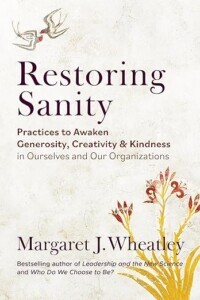
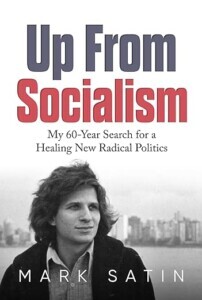
Recently Mark Satin wrote to Integral City as a longtime follower of his quest for inclusive caring socialist democracy, “I can testify that, all across America, leftist and visionary activists – and some very rich donors – are seething because I described our personal and organizational behaviors honestly, colorfully, and with great intimacy, so we and – especially – the next generations could learn from our experiences … including our mistakes and misbehaviors.”
Satin says his book violates a cardinal rule of political publishing – it can’t be typed as left or right or even “moderate.” It is genuinely innovative, calling on activists from all political perspectives to share their deepest fears, needs, and dreams with each other in order to create a life-affirming new politics that meets everyone’s core interests.”
The Table of Contents unfolds the itinerary of Satin’s journey:
A Tough Love Letter to the Social Change MovementWhy the New Left Did Not LastBuild a New Transformational PoliticsToward a More Healing Visionary PoliticsMark Satin’s heartfelt and honest writing takes the reader into the depths of his experience of activism. He reveals that his intention to change the world has effectively changed himself. Mark and his vision are a light for the millions of activists who long to do better.
===
.fusion-content-boxes-2 .fusion-content-box-hover .heading-link:hover .icon i.circle-yes, .fusion-content-boxes-2 .fusion-content-box-hover .link-area-box:hover .heading-link .icon i.circle-yes, .fusion-content-boxes-2 .fusion-content-box-hover .link-area-link-icon-hover .heading .icon i.circle-yes, .fusion-content-boxes-2 .fusion-content-box-hover .link-area-box-hover .heading .icon i.circle-yes { background-color: #65bc7b !important; border-color: #65bc7b !important; }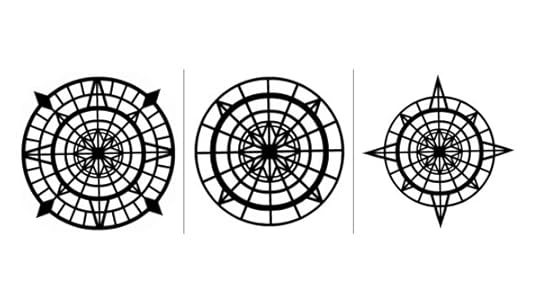 Integral City Constellation Events Inspiring PeopleLiving Cities Earth: Emergethon
Integral City Constellation Events Inspiring PeopleLiving Cities Earth: Emergethon 
Living Cites.Earth co-founders, hailing from diverse countries, industries, and fields of activity, present a series of solutions ready for implementation and realization. These solutions are designed to benefit people, organizations, territories, countries, and our planet at large. Each presentation, lasting 30 minutes, unfolds a new perspective on how we can transform our cities and the world for the better. Meet a constellation of programs, services, products, and technologies that promise to revolutionize our mindsets and worldviews. Click here to visit LCE’s YouTube Channel.
· Marina Demchenko “The INNER KEY© to your city”· Marilyn Hamilton “MeshSCAN AQAL City Survey”· Marilyn Hamilton and Marina Demchenko “Lead ALIVE – LCE Flagship Course Inquiry, Action, Impact”· Christiane Seuhs-Schoeller “Language of Spaces”· Nathaniel Whitestone and Joseph Rathinam “SONEC: Sociocratic Neighbourhood Circles”· Ferial Puren & Andy Ferguson “SRG Journeys Technology”· Andy Ferguson and Ferial Puren “How to absolutely love your life: SRG Journey Practice & Technology”· Darrell Gooden “Social Experience Lab – Spiral Dynamics Integral”· Aleksei Groshenko “Agile Career Shift Program”· Aleksei Groshenko “Integral Leadership Dynamics Program”· Aleksei Groshenko “Mastery of Leadership and Soft Skills Program”· Timothy Olsson “Circles – Pro-social networking platform”· Uri Noy Meir and Ilaria Olimpico “Story Lab”· Uri Noy Meir “Bama Maps”· Uri Noy Meir “Theatre that Reconnects”· Mandar Apte “Be The Change” and “Cities4Peace”Ecovillage Findhorn Community Learning Springs to New Life – Click Here for Calendar 2024 New Courses Gaia Education (a Co-Founder of Living Cities.Earth)
Gaia Education (a Co-Founder of Living Cities.Earth) Gaia Education is a leading provider of holistic education in sustainability, regenerative practices, and community development. Rooted in the principles of Earth care, people care, and fair share, Gaia Ed empower learners worldwide to build sustainable, thriving communities. Click here to explore online and in person courses and Training of Trainers.
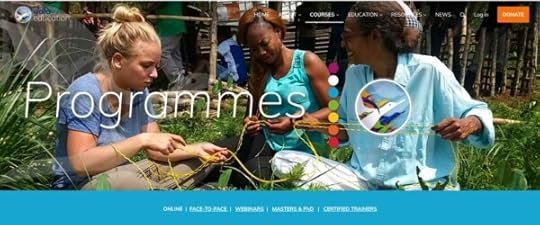
 World Unity Week 2024
World Unity Week 2024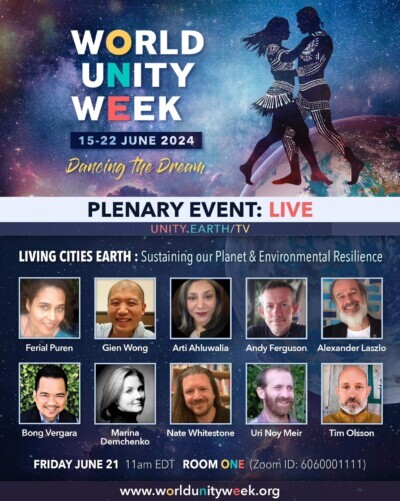
World Unity Week 2024 invites Integral City Meshworks to join Living Cities.Earth to share views of MeshScans and other wisdoms in WUW’s Meshworks Convergence Room on June 21, 2024 at 11am EDT. Click here to join the Zoom
Integral City Meshworks’ Team Leader, Ellen van Dongen:offers to our WhatsApp Group 4+1 Voices a monthly gathering to (re)connect our global family to share, inquire and celebrate. “Family are the relationships that lie at the centre and connect across our Human Hives. We recognize one another because we resonate with shared purpose and intention and we love to gather so we can share stories from all our 4+1 Voices.” Send an email to info@integralcity.com if you’d like to join.Integral City Meshworks as a Partner with Living Cities.Earthin 2024 is designing and delivering new trainings. In the Design Room we have the following resources and courses emerging shape:ALIVE series of courses that explore the fractal patterns of Person, People, Place and Planet – including:Lead ALIVEOrganize ALIVEPlace ALIVEPlanet ALIVEPROFILES for Assessing, Connecting and Collaborating with the 4+1 Voices:12 Intelligence Discovery Tour – assessing emergence of 12 Intelligences in your CityMeshSCAN – revealing 4 Quadrant Perspectives of your CityInner Key – (developed by Dr. Marina Demchenko/Panorama Studio) revealing Subjective/Intersubjective Profile of your CityFor inquiries send an email to info@integralcity.com – and stay tuned through www.livingcities.earth
Celebrating Our Cities as Patterns of PeopleJune 21 marks the start of what Integral City calls the People Quarter (from June 21 to September 20). How intriguing it is to consider cities not only at Planetary Scale through our relationship with Living Cities.Earth but also at Ecovillage Scale through our work with Ecovillage Findhorn. And in the midst of these dynamic experiences, we are reminded how the metaphors for the city are stretching beyond Human Hives (as we have imagined as Integral City for decades) but to be reminded that cities can be thought of as Forests (as Janine Benyus suggests in the link below) and to gain new insights from the bar coding of our microscopic DNA (see link below). In a time when the news still leads with the tragedies of war, how imperative for survival it is that we are reminded of the simple value of Restoring Sanity (thank you dear mentor Margaret Wheatley for your new book - link above) and the never ending quest for a politics that enables and inspires the relationships between those dearest and nearest and those most honest and clear-eyed in places of conflict and incubators of deep evolutionary change (thank you Mark Satin for clarity in the long now - expressed in your new book Up from Socialism - link above.)
Meshful Blessings for this Season exploring the multitude of connections that improve the health of our Human Hives of all sizes, dimensions and voices...Marilyn HamiltonFounder Integral City Meshworks
PS Here are some FREE resources for uplifting Integral City People:1.Intelligence of the Biosphere
Video: Janine Benyus – Cities that Function Like Forests: Biomimicry Maps a Sustainable FutureScientists Using AI to Talk to Animals Bees – Scientists are Learning Bee Language Check out this Bee House The Making of the Bees Exhibition, National Museums Liverpool YouTube
2.Wellbeing News at Scale
How to BarCode DNA Declaration de Chaillot – Building Industry Creates Climate Decarb Standard Year in Cheer 2023 – Reasons to be Cheerful Village of Lovers – Tamera Portugal Green Corridors Reduce Medellin City Heat 2+ degrees Net Zero Island – the First Vital Signs Monitor for Earth Health Earth Shot News3. Integral City Blogs
Ecovillage Findhorn Catch Up: On Purpose What’s the Purpose of Purpose for Ecovillage? Inspirations for Community Purpose: Findhorn Findhorn: Work in Progresss – Draft Purpose Statements Patterns of Purpose – 5 Themes for Findhorn Community Revisiting Parker Palmer’s 13 + 1 Reflections on Community Post Partum Suffering for a Greater Reality From Purpose Quest to Exploring Aims Is it Easier to Live in a City than an Ecovillage? Appreciating the Fields of Ecovillages, Places/Urban Ecosystems, 4th Voices 4. Newsletters & Equinotes Past Issues 2024 and 2023March 2024 Equinotes: Surviving Shadow, Trauma, LossReflective Organ Newsletter December Solstice 2023: Gaia Breathes, Learns, FruitsSeptember 2023 Equinotes: Amplified Intelligences, Wisdom, PrinciplesReflective Organ Newsletter June Solstice 2023: We-Space, Ecologies, Holobionts5. Explore Integral City Archive of Newsletters and Blogs in our MetaBlogs:Integral City Meta Blog 2023Integral City Meta Blog 2022Integral City Meta Blog 2021Integral City Meta Blog 2020Integral City Meta Blog 2019Integral City Meta Blog 2018Integral City Meta Blog 2017Integral City Meta Blog 2016Integral City Meta Blog 2015Integral City Meta Blog 2014Integral City Meta Blog 2013.fusion-fullwidth.fusion-builder-row-1 { overflow:visible; }June 14, 2024
Is it Easier to Live in a City than an Ecovillage? Appreciating the Fields of Ecovillages, Places/Urban Ecosystems, 4th Voices
 Local Purposing
Local PurposingThese last few months I have been dedicating much of my energies to catalysing a Vision and Purpose Quest in the Ecovillage Findhorn in northern Scotland, where I live.
In the process of designing a Vision Quest and then following the paths that people are attracted to travel, we have re-affirmed many of the processes Integral City has identified in earlier times in other locations, working in towns and cities. It appears that key fundamental questions still reveal realities that are the energizers for incubating change in our human ecosystems (no matter what size):
What works around here?What doesn’t work around here?If you were mayor for a day, what is the first thing you would change?These are questions I started using in much larger urban settlements than ecovillages and that I thought would still make sense to use here. And so the engagement with these questions does indeed raise individual interest, energizes groups and even releases resources – especially when they are interwoven with the spiritual practice of Attuning to the Silence – the greater Field of life that flows through all of us.
It is intriguing and inspiring for me that these core questions still have power. Their simplicity means that most everyone can answer them. They are a potent place to start an inquiry and generate a Field of engagement where the 4 Voices (citizens, civic manager, business/innovators, civil society) of the ecovillage can notice the patterns that connect them.
But now that I am moving forward with focalising this inquiry in the ecovillage where I live, I notice a peculiar experience – that it seems more difficult to live (comfortably) in the ecovillage than it does in a larger town or city?
Why should this be? Perhaps it relates to the proximity and intensity with which human interaction takes place in the ecovillage? Even though our ecovillage has outgrown Dunbar’s number (of 150 key relationships) it still hovers in that zone of natural connections – we have about 200 houses. And when people turn up for the community engagement processes, we are numbering between 55 and 150 in attendance.
But whether you attended group interactions, or stayed on the sidelines, in the ecovillage most everyone has an opinion that they feel entitled to express.
So the discovery experience invites not only curiosity but it can get diverted into blaming and criticizing even before the whole process has been completed. What is the difference between having an opinion and taking responsibility? The exploration of this question is vital to the ecovillage’s capacity for change.
We are discovering that the identification of Purpose opens the doors to not only an exploration of Vision, but also invites Mission and Aims and Goals into the process. We move from the demonstration of Mutual Trust and Respect (MTR) for each other to the invitation to join forces and create the conditions for outcomes and outputs. This can even mean commitments to timing, budgets and expert resourcing. It requires us to move from the general to the particular.
And when you live in an ecovillage this can become uncomfortably close to home – because those resources of time, funding and resourcing are found in the very people we live next to, interact with in life, work and play and depend on for safety and security. So we risk asking for and/or taking on the intentions to Dream, Design, Deliver, Debrief not just as an impersonal Appreciative Inquiry that we might do in a large workplace or a city with many neighbourhoods – but as a commitment to every day living and the quality of life.
Whereas if you lived in a city, you could engage in all these ways – but you have the opportunity and option to walk away from them until you agree to meet again.
In the ecovillage you may agree to a formal time to convene for exploration, but you have an infinite loop of relationships with those same people you will meet daily in the shop, at Taizé, at the café, walking on the street, strolling on the beach, minding children, attending an art exhibit. In an ecovillage there is no escape from each other because of the proximity of life interactions.
So perhaps this explains the hesitancy for some/many to get involved? In an ecovillage accountability is an uncomfortable reality that not everyone wants to make explicit.
City DistancingWhereas in the town or city, escape or distancing is possible. Intense engagement is not measured as 24/7 but perhaps 1/14 or even 1/30. There is both greater distance, more people to involve in the process, more facilities to use as resources, and budgets from the public and not-for-profit and profit sectors. So the responsibility (aka burden) of any projects is more widely shared. In the city we even take this for granted and don’t bother to get personally involved. If we want, we can receive all the benefits without doing much (or any) work. In fact we can often simply pay a fee or tax and it is done for us.
However, recently people living in cities have experienced a challenge to our assumptions about town and city capacities. During Covid lockdowns, our access to town/city resources was severed and many neighbourhoods discovered the power of what resulted in creating urban ecovillages. People realized that they had to depend on their neighbours and/or offer help to those less able to look after themselves. And from these local outreaches we saw the emergence of Community Action Networks (CAN) (Alternative) . In generally self-organizing ways people came to know each other to help them survive the constraints of lockdown. Now that the need for the CANs has mostly disappeared many people who discovered the value of CANs, have not returned to the impersonal relationships they had with city departments. They are working to keep their CAN alive. And discovering both the potency and invasion of a kind of village life into individual citizen expectations.
Many are finding these closer relationships are rewarding and don’t want to give them up. Some (like Cool Blocks) have developed whole systems to connect, consolidate and integrate their local intentions and attentions. And in the process developing systems of resilience and regenerativity.
4th VoiceAnother outcome of this rediscovery of villaging lifestyle is a recognition that collective consciousness arises beyond the voice pronouns of 1st (I/We), 2nd (You), 3rd (S/he, They) – it is an uber-consciousness that Scharmer/Pomeroy call the 4th Voice.
In some ways their 4th Voice is a phenomenon that arises from calling the Integral City 4 Voices together as representing the whole system. Their 4th Voice is identified as a Field arising from and beyond all the sensibilities and consciousness of the perspectives we take for granted in daily conversation/life. But Scharmer/Pomeroy point to the power of integration that the 4th Voice brings. This aligns deeply with Scharmer’s call to Presence ourselves – not just as individuals but as collectives. To become aware of the Field of Intelligence that arises because we invite in Silence as well as the spoken word (taking the Power of the Evolutionary Intelligence at the centre of the Integral City GPS).
And ironically this takes me back to the power of the Ecovillage – because certainly at Ecovillage Findhorn attuning to the Evolutionary Silence sounds very similar to what Scharmer/Pomeroy propose is the eloquence of the 4th Voice – to bring us into the Unitive Field (Currivan) .
Patterns of Human InteractionSo from Purpose to Placing to Presencing we discover a fractal, holographic pattern of human interaction – that connecting the system to more of itself, enables our ecovillages to become coherent, our neighbourhoods to become rewarding containers of connection and our 4th voices to be heard in the power of their (shared) silence.
From Purpose Quest to Exploring Aims

Last Sunday, at another community gathering, we moved on from exploring Purpose to defining Primary Aims. Guided by Gordon McAlpine/NFA and Tessa Brock/EF, we welcomed back 55 Questors including 11 Harvest Hosts. In groups of 5 we took the challenge to identify key Aims that revealed how to live our Community Purpose. Using the 5 Themes affirmed on June 3, we discovered 15 Aims. Summarized in the table below, with the votes each received, we have used colours to group 5 related topics. The Visioning Team will now collaborate with the NFA Council and EF Board how to progress this work of agreeing on a set of Common Aims for our community (and integrate them into our Local Place Plan).
Votes Draft Aim27To create a spiritual, relational learning environment for ourselves and others10Spiritual attunement and social alignment3Through clarifying our purpose we live our common ground and our commitment to personal and collective spiritual growth3Address the shadow side of this community19Thriving on an economic, environmental and social level3Strengthen community volunteering / culture2Real wealth and livelihood for all beings0Financial sustainability through sustainable practices on all levels19Inclusive accountable governance structures with clear lines of responsibility focused on outcomes and grounded in what is possible10Cohesion of individuals and organisations attracting and retaining aligned people from a diverse background6To attract and retain people of all ages aligned and committed with stated purpose10Working in harmony with Nature9Create unified vision and story for community3Develop physical infrastructure and agree on priorities1Service and loveJune 5, 2024
Post Partum Suffering for a Greater Reality
This week Ecovillage Findhorn has immersed ourselves in a Purpose Quest. We learned from 5 Inspirational Sources (see full inspirations here).
Whole Community PurposeStrategic FrameworkGlobal Ecovillage NetworkDorothy MacLeanPatrick Lewington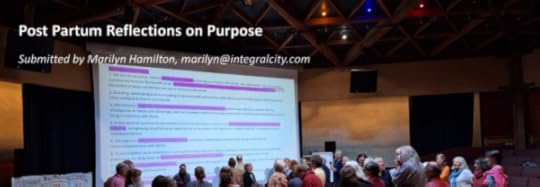
From these inspirations, we drafted 8 Potential Purpose Statements (see them here). And from these we identified 5 Themes:
Spiritual CommunityConnect with Intelligences of NatureEvolve and Support One AnotherRegeneration and ResilienceService to WorldWhile these interactions have inspired and woven and meshed our connections in community, I have been perplexed – even suffering? – about resistances and disconnections within and between community organizations. This reminded me to find my favourite Parker Palmer article: Thirteen Ways of Looking at Community (…with a fourteenth thrown in for free). (Read the whole wisdom here). Palmer’s discoveries about intentional community can be summarized in this table – and now I see my suffering is necessary … I wonder who else might support me as we open to our larger reality?
Old Ways of Thinking About CommunityPalmer’s Ways of Honouring CommunityCommunity is a goal.Community is a gift.We achieve community through desire, design, and determination.We receive community by cultivating a capacity for connectedness through contemplation.Community requires a feeling of intimacy.Community is not dependent on intimacy and must be expansive enough to include strangers, even enemies, as well as friends.Community is a romantic garden of Eden.Community is a crucible for our inner refinement and must endure hard times.Leadership is not needed in communities.Leadership creates “space” for human resourcefulness and creativity.Suffering is bad and should be avoided.Suffering is a necessary stage in opening the heart to a larger reality.Revisiting Parker Palmer’s 13 + 1 Reflections on Community
 Thirteen Ways of Looking at Community (…with a fourteenth thrown in for free)by Parker J. Palmer
Thirteen Ways of Looking at Community (…with a fourteenth thrown in for free)by Parker J. PalmerWhether we know it or not, like it or not, honor it or not, we are embedded in community. Whether we think of ourselves as biological creatures or spiritual beings or both, the truth remains: we were created in and for a complex ecology of relatedness, and without it we wither and die. This simple fact has a critical implication: community is not a goal to be achieved, but a gift to be received. When we treat community as a product that we must manufacture instead of as a gift we have been given, it will elude us eternally. When we try to “make community happen,” driven by desire, design, and determination-places within us where the ego often lurks-we can make a good guess at the outcome: we will exhaust ourselves and alienate each other, snapping the connections we yearn for. Too many relationships have been diminished or destroyed by a drive toward “community-building,” which evokes a grasping that is the opposite of what we need to do: relax into our created condition and receive the gift we have been given.Of course, in our culture-a culture premised on the notion that we must manufacture whatever we want or need-learning to relax and receive a gift requires hard work! But the work of becoming receptive is quite unlike the external work of building communal structures, or gathering endlessly to “share” and “solve problems”: receptivity involves inner work. Community begins not externally but in the recesses of the human heart. Long before community can be manifest in outward relationships, it must be present in the individual as a “capacity for connectedness”-a capacity to resist the forces of disconnection with which our culture and our psyches are riddled, forces with names like narcissism, egotism, jealousy, competition, empire-building, nationalism, and related forms of madness in which psychopathology and political pathology become powerfully intertwined.We cultivate a capacity for connectedness through contemplation. By this I do not necessarily mean sitting cross-legged and chanting a mantra, though that may work for some. By contemplation I mean any way one has of penetrating the illusion of separateness and touching the reality of interdependence. In my life, the deepest forms of contemplation have been failure, suffering, and loss. When I flourish, it is easy to maintain the illusion of separateness, easy to imagine that I alone am responsible for my good fortune. But when I fall, I see a secret hidden in plain sight: I need other people for comfort, encouragement, and support, and for criticism, challenge, and collaboration. The self-sufficiency I feel in success is a mirage. I need community-and, if I open my heart, I have it.The most common connotation for the word “community” in our culture is “intimacy,” but this is a trap. When community is reduced to intimacy, our world shrinks to a vanishing point: with how many people can one be genuinely intimate in a lifetime? My concept of community must be capacious enough to embrace everything from my relation to strangers I will never meet (e.g., the poor around the world to whom I am accountable), to people with whom I share local resources and must learn to get along (e.g., immediate neighbors), to people I am related to for the purpose of getting a job done (e.g., coworkers and colleagues). Intimacy is neither possible nor necessary across this entire range of relationships. But a capacity for connectedness is both possible and necessary if we are to inhabit the larger, and truer, community of our lives.The concept of community must embrace even those we perceive as “the enemy.” In 1974, I set off on a fourteen-year journey of living in intentional communities. By 1975, I had come up with my definition of community: “Community is that place where the person you least want to live with always lives.” By 1976, I had come up with my corollary to that definition: “And when that person moves away, someone else arises immediately to take his or her place.” The reason is simple: relationships in community are so close and so intense that it is easy for us to project onto another person that which we cannot abide in ourselves. As long as I am there, the person I least want to live with will be there as well: in the immortal words of Pogo, “We has met the enemy and it is us.” That knowledge is one of the difficult but redeeming gifts community has to offerHard experiences-such as meeting the enemy within, or dealing with the conflict and betrayal that are an inevitable part of living closely with others-are not the death knell of community; they are the gateway into the real thing. But we will never walk through that gate if we cling to a romantic image of community as the Garden of Eden. After the first flush of romance, community is less like a garden and more like a crucible. One stays in the crucible only if one is committed to being refined by fire. If we seek community merely to be happy, the seeking will end at the gate. If we want community to confront the unhappiness we carry within ourselves, the experiment may go on, and happiness-or, better, a sense of at-homeness-may be its paradoxical outcome.It is tempting to think of hierarchy and community as opposites, as one more “either-or.” But in mass society, with its inevitable complex organizations, our challenge is to think “both-and,” to find ways of inviting the gift of community within those hierarchical structures. I am not proposing the transformation of bureaucracies into communities, which I regard as an impossible dream. I am proposing “pockets of possibility” within bureaucratic structures, places where people can live and work differently than the way dictated by the organization chart. The most creative of our institutions already do this: e.g., those high-tech companies that must organize efficiently to protect the bottom line and get the product out the door, but must also create spaces where people can collaborate in dreaming, playing, thinking wild thoughts, and taking outrageous risks, lest tomorrow’s product never be imagined.Contrary to popular opinion, community requires leadership, and it requires more leadership, not less, than bureaucracies. A hierarchical organization, with its well-defined roles, rules, and relationships, is better able to operate on automatic pilot than is a community, with its chaotic and unpredictable energy field. But leadership for community is not exercised through power (i.e., through the use of sanctions) that is the primary tool of bureaucratic leadership. Leadership for community requires authority, a form of power that is freely granted to the leader by his or her followers. Authority is granted to people who are perceived as authentic, as authoring their own words and actions rather than proceeding according to some organizational script. So the authority to lead toward community can emerge from anyone in an organization-and it may be more likely to emerge from people who do not hold positional power.Leadership for community consists in creating, holding, and guarding a trustworthy space in which human resourcefulness may be evoked. A critical assumption is hidden in that definition-the assumption that people are resourceful. Standard organizational models assume that people have deficits and scarcities rather than resources: people do not want to work, so the organization must surround them with threats; people would not know what to do with the unexpected, so organizational life must be routine; people will try to cheat if given half a chance, so the organization must build walls of security. When we act on the scarcity assumption, it becomes a self-fulfilling prophecy through a process called resentment (small wonder!), and people are rendered incapable of community, at least temporarily, sometimes permanently.Ironically, we often resist leaders who call upon our resourcefulness. We find it threatening when leaders say, “I am not going to tell you how to do this, let alone do it for you, but I am going to create a space in which you can do it for yourselves.” Why is that threatening? Because many of us have been persuaded by institutions ranging from educational to industrial to religious that we do not have the resources it takes to do things, or even think things, for ourselves (which, to the extent that we believe it, expands an institution’s power over our lives). Many people have been convinced of their own inadequacy, and any leader who wants to invite them into a community of mutual resourcefulness must see this invisible wound and try to heal it.Seeing and treating that wound takes courage and tenacity: while the leader is calling followers to fullness, the followers are accusing the leader of not doing his or her job. Every teacher who has tried to create a space for a self-sustaining learning community knows this story: students resist on the grounds that “we are not paying tuition to listen to John and Susie talk, but to take notes from you, the person with the Ph.D.” It takes a deeply grounded leader-a leader with a source of identity independent of how popular he or she is with the group being led-to hold a space in which people can discover their resources while those same people resist, angrily accusing the leader of not earning his or her keep.In the face of resistance, an ungrounded leader will revert to the bureaucratic model: the teacher will revert to lecturing rather than inviting inquiry, the manager will revert to rule making rather than inviting creativity. In the face of resistance, leaders will do what they are taught to do: not create space for others, but fill the space themselves-fill it with their own words, their own skills, their own deeds, and their own egos. This, of course, is precisely what followers expect from leaders, and that expectation prolongs the period during which leaders of community must hold the space-hold it in trust until people trust the leader, and themselves, enough to enter it.There is a name for what leaders experience during this prolonged period of patient waiting. It is called “suffering” (which is the root meaning for the word “patience”). Suffering is what happens when you see the possibilities in others while they deny those same possibilities in themselves. Suffering is what happens when you hold in trust a space for community to emerge, but others lack the trust to enter the space and receive the gift. Suffering is what happens while you wait out their resistance, believing that people have more resources than they believe they have. But leaders do not want to suffer. So we create and maintain institutional arrangements that protect leaders from suffering by assuming the worst of the followers and encouraging leaders to dominate them by means of power.I have yet to see a seminar in suffering as part of a leadership training program. I can think of three reasons why. One, we train leaders for bureaucracy rather than community, no matter what we say we are doing. Two, the idea of leadership is still so steeped in machismo that we do not want to acknowledge a “weakness” like suffering. Three, suffering is a spiritual problem, and we want to keep leadership training in the orderly realm of theory and technique, rather than engage in the raw messiness of the human heart.
But leadership for community will always break our hearts. So if we want to lead this way, we must help each other deal with that fact. We might begin by viewing the problem through the lens of paradox, that spiritual way of seeing that turns conventional wisdom upside down. Here, “breaking your heart” (which we normally understand as a destructive process that leaves one’s heart in fragments) is reframed as the breaking open of one’s heart into larger, more generous forms-a process that goes on and on until the heart is spacious enough to hold both a vision of hope and the reality of resistance without tightening like a fist.
If we are willing to embrace the spiritual potentials of suffering, then community and leadership, human resourcefulness and the capacity to hold it in trust, will prove to be abundant among us-gifts we have been given from the beginning, but are still learning how to receive.
~~~
Parker J. Palmer is a writer and traveling teacher who works on issues in education, community, leadership, spirituality, and social change. He has authored five books, including The Active Life: Wisdom for Work, Creativity, and Caring (Harper San Francisco, 1990), and The Courage to Teach: Exploring the Inner Landscape of a Teacher’s Life (Jossey-Bass, 1998). “The Leadership Project,” a 1997 survey of 11,000 faculty and administrators, named him as one of the nation’s thirty most influential senior leaders in higher education.
Marilyn Hamilton's Blog
- Marilyn Hamilton's profile
- 3 followers



